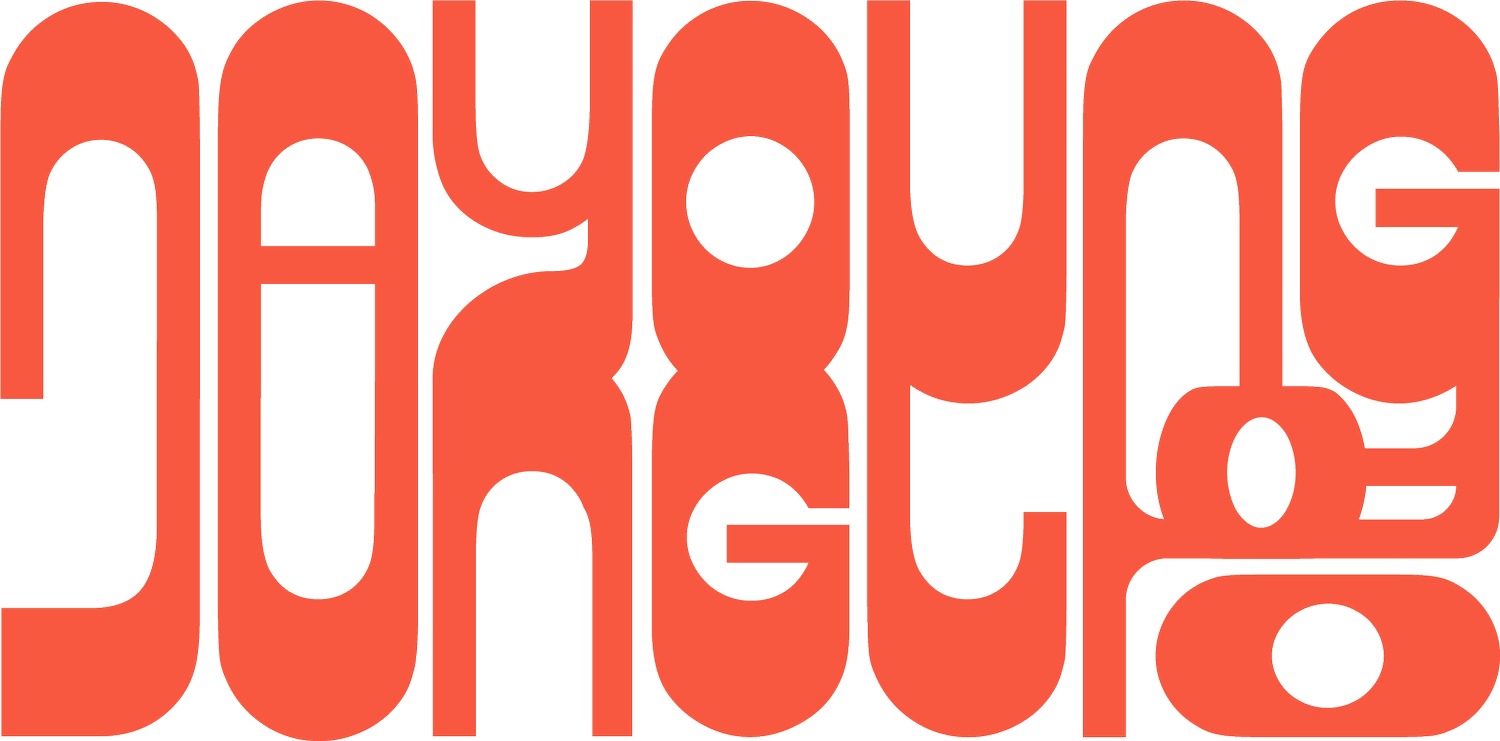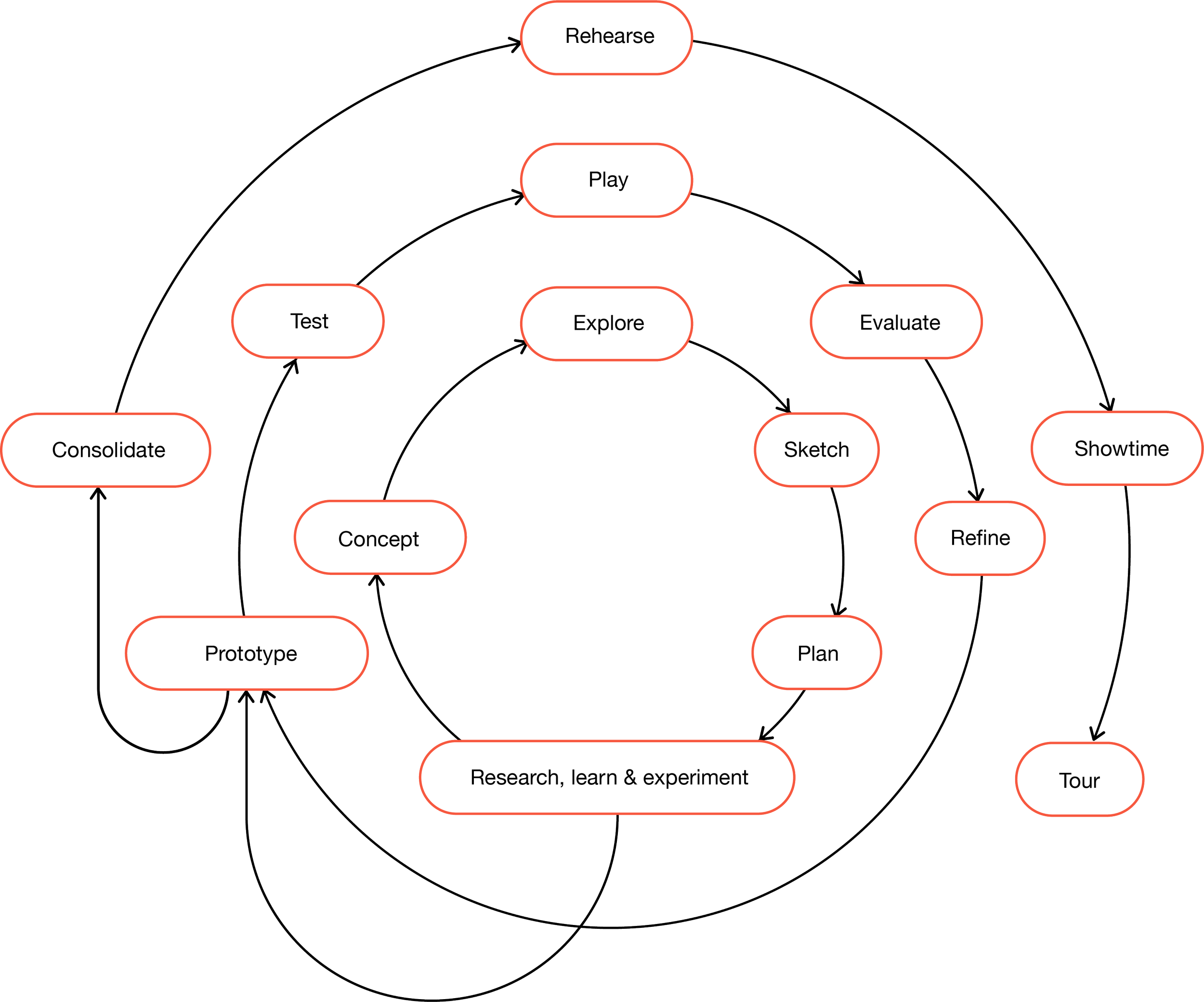more-than-switch
More-Than-Switch explores embodied interaction in an unconventional artefact to interact with a light art installation. This was my master’s thesis project for the Media Technology program at Leiden University- ‘More-Than-Switch: An Embodied Light Control’(2025). Presented at the conference- Research and Educational Advancements in Culture and Technology (REACT 2025) in Vienna, Austria. Currently working on its conference proceedings.
LED strip, Grinding Wheel, Arduino
2m (W) * 1m (L) * 1.2m(H); spatial layout
Timeline
2024-2025Role
Individual Researcher
Research question
What forms of crank-based interaction can we imagine in the context of embodied light control?
Lighting has evolved- but our interactions haven’t.
Light shapes our experience of the world through brightness, colour, angles, edges, motion, and patterns. Modern systems offer dynamic control, yet we still rely on basic, utilitarian tools. We turn ‘on’ the switch to turn ‘on’ the light, or we use a slide dimmer to adjust the brightness.
Crank as an Input
This study specially used a grinding wheel (slijpsteen) as an input to control the light, as rotation has not been actively explored in the lighting control context besides the hue-control. This unconventional approach guides our focus towards the rotation-based behaviour itself.
Two Directions
Cranking becomes not only an input to control the light’s brightness, colour, and movement but also an embodied control, connecting the audience and the light- a communicative tool.
approach
Format: Research-Through-Design
This study used encouraged iterative prototyping tests. The follow-up experiments complement the aspects that the previous experiments did not achieve.
Hardware
Throughout the iterative prototyping, Arduino and 2 sensor types (discrete and continuous) were used, and the crank handles were either a small crank handle or a grinding wheel.
Evaluation
The light system responds to cranking direction and speed. In the laboratory settings, the researchers evaluated the simulated behaviours across 34 experiments based on:
Controllability
Repeatability
Understandability
Intuitiveness
Engagement
The following image shows the overview of the evaluation results from the experiments.
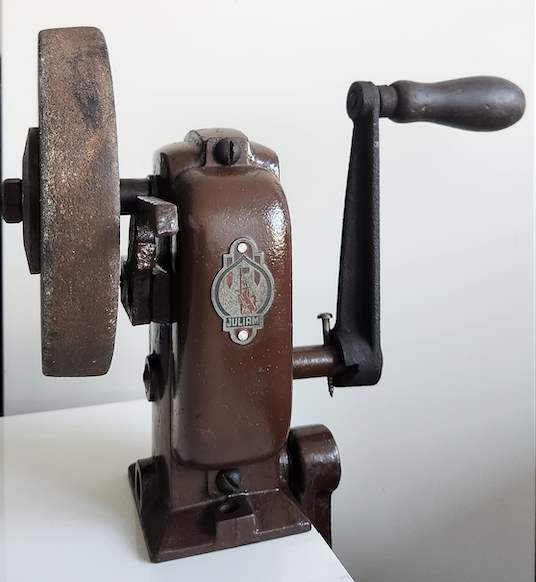
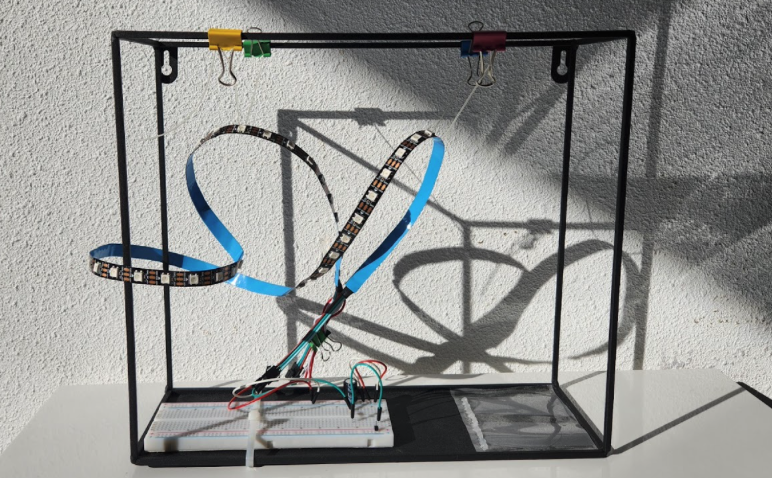
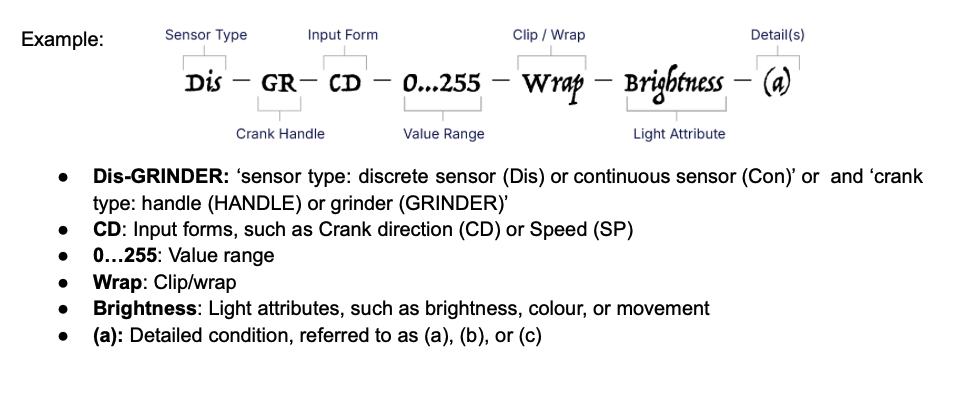
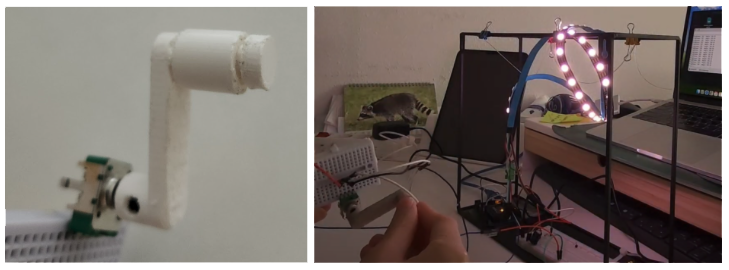
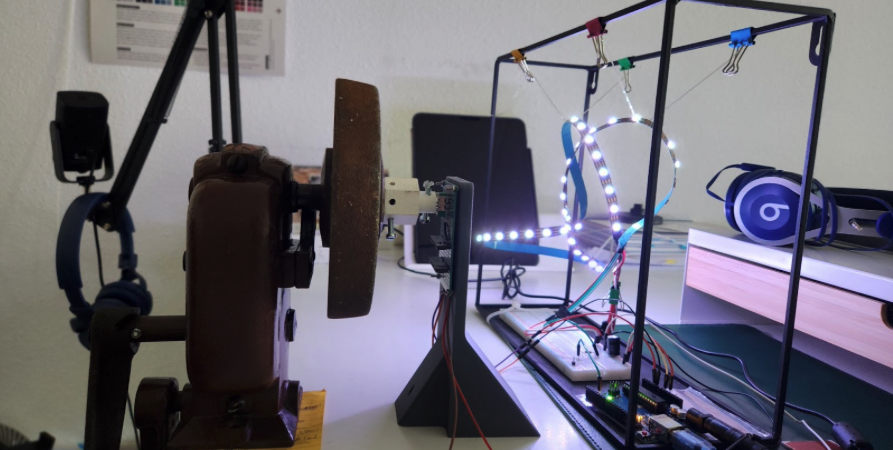
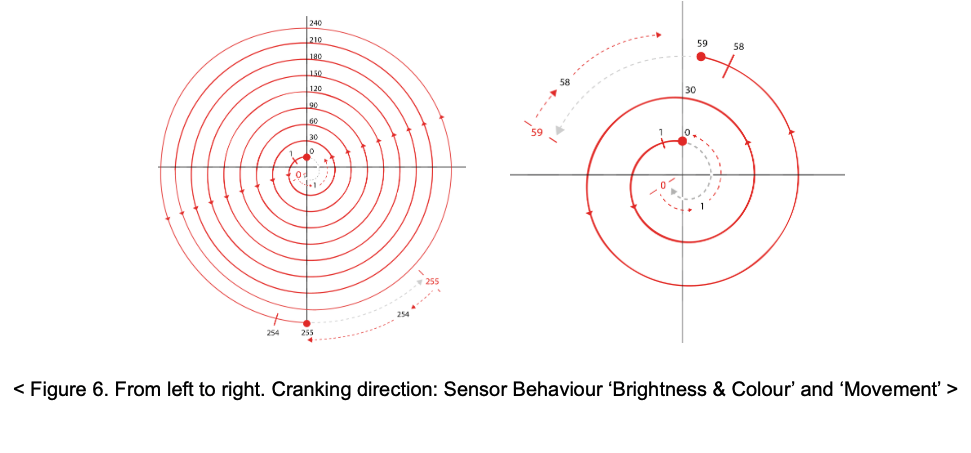
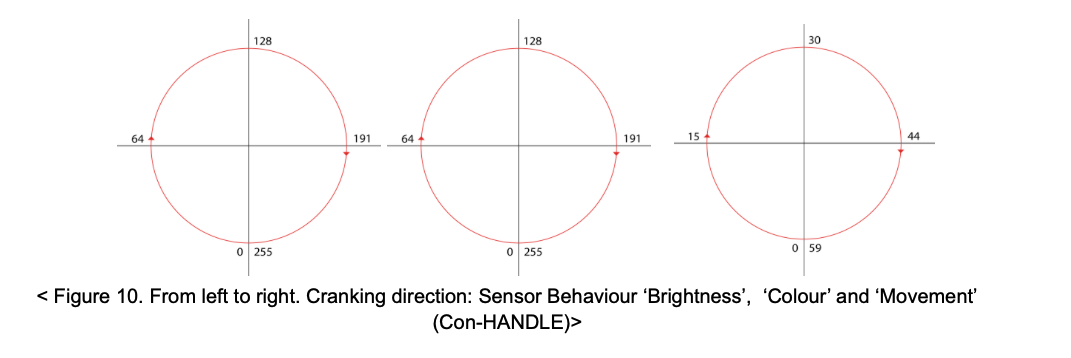
Final Design
communicative control
if our body can be an input, so does light.
Interaction Diagram
key highlights
Small crank handles (with low inertia) are more useful to obtain an intended value, while grinding wheels (with high inertia) create a more engaging interaction, particularly when speed influences light movement.
When cranking is used to create an interactive dialogue between the audience and the light, the grinding wheel’s difficulty in control enhances engagement; the high inertia helps maintain the cranking at a constant speed, leading to create tension between them.
The following video demonstrates the crank-based interactive communication between light and us.
Still want to see other experiments?
next step
Refine and Expand Comparative Setups
Some setups in this study were incomplete or not fully compared due to iterative prototyping.
→ Future research should explore missed combinations like multi-turn input and mirrored control to uncover deeper experiential contrasts.
Consider Form Factor Impacts
Differences in crank handle types (handheld vs. table-mounted) significantly affected user experience and control accuracy.
→ More controlled comparisons and refined prototypes can better isolate the effect of physical form and inertia.
Broaden User Involvement
Evaluations relied heavily on researcher insights.
→Additional user feedback will help clarify how light behaviour (e.g. brightness animation, directional input) can be more intuitively understood.
